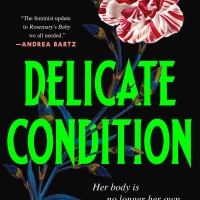Book Review: Lily of the Nile by Stephanie Dray
 Lily of the Nile is a historical fiction novel about Selene, the daughter of Cleopatra and Mark Antony. From birth, Selene and her twin brother Helios were hailed as a sacred pair by the worshipers of Isis, but after Alexandria fell to Roman forces and the suicides of their parents, the children are brought to Rome by the conqueror Octavian to be fostered in his imperial household. A prisoner trapped in a culture completely at odds with her heritage and faith, Selene struggles to hold on to Isis and the memory of her parents’ legacy, meanwhile using all her wits to survive life in the Roman court.
Lily of the Nile is a historical fiction novel about Selene, the daughter of Cleopatra and Mark Antony. From birth, Selene and her twin brother Helios were hailed as a sacred pair by the worshipers of Isis, but after Alexandria fell to Roman forces and the suicides of their parents, the children are brought to Rome by the conqueror Octavian to be fostered in his imperial household. A prisoner trapped in a culture completely at odds with her heritage and faith, Selene struggles to hold on to Isis and the memory of her parents’ legacy, meanwhile using all her wits to survive life in the Roman court.
This was simply a beautiful novel. While not exactly a heart-thumping page-turner, it nonetheless had me enraptured with its story and characters every step of the way.
At the heart of it, Lily of the Nile is a coming-of-age story, and it’s a unique one at that. It’s labeled as historical fiction, but I was surprised to find a thread of fantasy laced through the novel in the form of old magic, which sets it apart from many other historical fiction I’ve read in the past.
This novel uses a lot of symbols and imagery to illustrate its themes, of which the most interesting to me was the relationship between masculinity and femininity. For example, Isis, Cleopatra, Egypt, Alexandria, the moon, the Nile and even Selene herself were all used at some point as metaphors for the feminine, while Rome embodies everything about the masculine. I am thoroughly impressed at how the author has created this war of symbols behind the backdrop of the actual story, and despite the power struggle between the two sides, masculinity and femininity meet as equals in the end. This is just one of the many themes I glimpsed in this this novel, and as they all “clicked” to me as I was reading, I began to realize how elaborately woven this story is.
The other thing that struck me was the novel’s approach to political intrigue. It is nowhere near as daunting as the way it was handled in George R. R. Martin’s “A Song of Ice and Fire”, nor does it have the flare or epicness of HBO’s Rome, but its subtlety is something I can appreciate nonetheless. In fact, I didn’t even get the sense that there was anything of the sort until I was well into the book. When the political dealings finally became apparent to me, it was even more captivating given what was revealed of Octavian’s cunning, and knowing the fact these political games were essentially being played with the children as the pieces.
Finally, I have to say I can’t imagine how much research went into the writing of this novel. Stephanie Dray makes every effort to stay historically accurate, and what she embellished or changed for the sake of brevity she explains in her author’s note at the end of the book.
At the same time, she is very good at injecting life in the novel amidst the historical facts. The fantasy/magic aspect I mentioned before plays into this, but the author also paints a very realistic and vibrant picture of her characters, especially the children — Selene, her brothers Helios and Philadelphus and all the other children in Octavian’s household. My favorite character had to be Julia, the impish daughter of the emperor. Besides the main story, what I liked most about the book were the children and their relationships with each other and the adults who hold the power over their lives.












